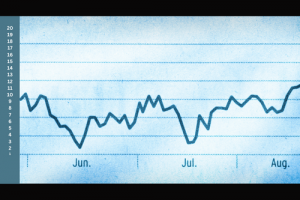Rugby Rankings Formula Explanation:
The formula relies on several factors, including:
- STRENGTH OF OPPOSITION (weighting)
- MARGIN OF VICTORY
- HISTORIC STRENGTH (based on past 3 years performance)
- MARGIN OF LOSS
- POINTS SCORED ON THE FIELD
- HOME/AWAY STATUS
- ACTUAL RESULT (W/L/D)
- LOSING BONUS POINT (within 10 points)
As you may appreciate when these factors are used in the equation no two teams will be rewarded the same number of points even if the result (W/L/D) is the same. For example: If TEAM A beats TEAM B 10-3 and TEAM C beats TEAM B 5-0, the result is the same, ie a “win for TEAM A and TEAM C, but we can’t really say that the results are identical and hence it cannot be valued the same.
TEAM A clearly, based on scoring more points and winning by a greater margin, deserves more reward for their effort. What about TEAM B, should they not get rewarded for losing by fewer points when they played TEAM C? Of course, they should. However, what if TEAM C beat TEAM B away from home but TEAM A’s victory was at home? Should TEAM C get an extra reward for their efforts? Most would agree. That is just one variable of many that the rankings formula factors in. Multiply that example by the over 500 teams in the system and you may appreciate that all the results from all the teams and all the factors for all the teams will have a bearing on the final rankings table. As any statistician will tell you the more factors that are used the closer one gets to a truer picture.
 The formula however does not consider teams who are unlucky, or have injured players, or poor reffing decisions etc. It just looks at the numbers.
The formula however does not consider teams who are unlucky, or have injured players, or poor reffing decisions etc. It just looks at the numbers.

NB: About the ‘’average bonus points’’ column which is ultimately ranking a team it must be appreciated that these numbers are always fluid (as with any mean average), and will go up or down even if a team wins a match because it is an average and reliant on different variables that are being entered depending on the different factors that will vary from match to match even if a team wins every match. We are using the ‘arithmetic mean’ (AM)
Example: Johnny records the following maths marks for his tests:
70%
75%
82%
71%
His average mark will be = 74.5 %
When Johnny does his next test which are a little more difficult, he once against passes the test (wins the match) but this time he gets 64% for his test. A pass. Will his average go up or down now? Obviously even though he passed the test fairly well his average went down to 72.4%. Johnny would therefore not really be taken seriously if he complained that his average went down even though he passed the test.
As mentioned earlier each factor in the rankings equation: Strength of opposition, margin of victory, margin of loss, actual points scored on the field, actual results (W/L/D) , Historic Strength and home and away status and others garners a team a prescribed amount of bonus points. These bonus points will vary from match to match as all these factors will be different from match to match. These bonus points are tallied and divided by matches played to render an average.





